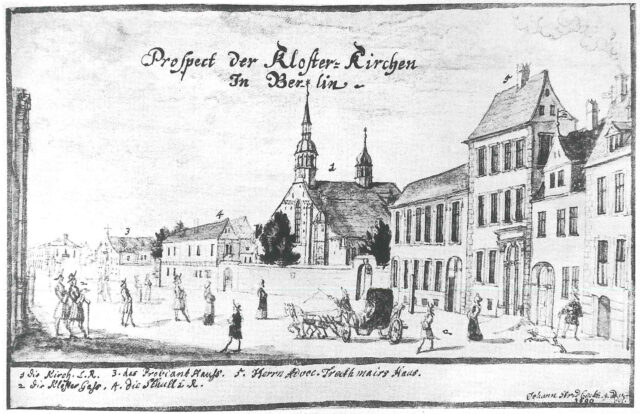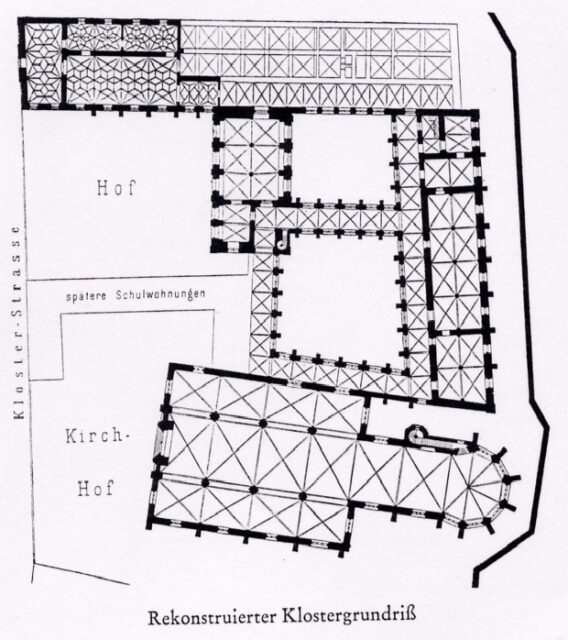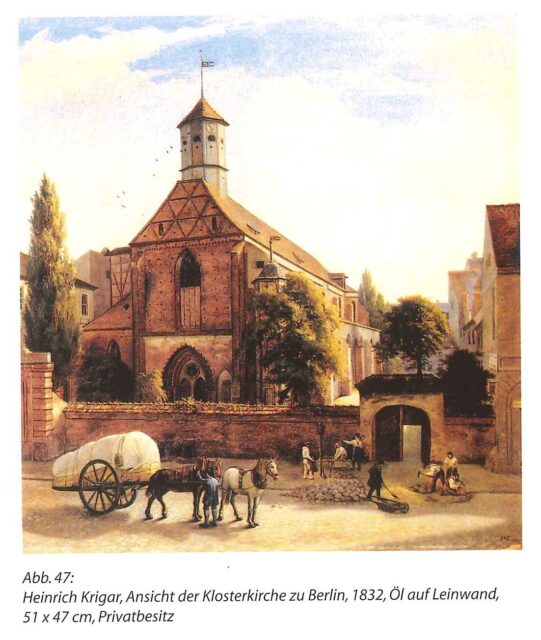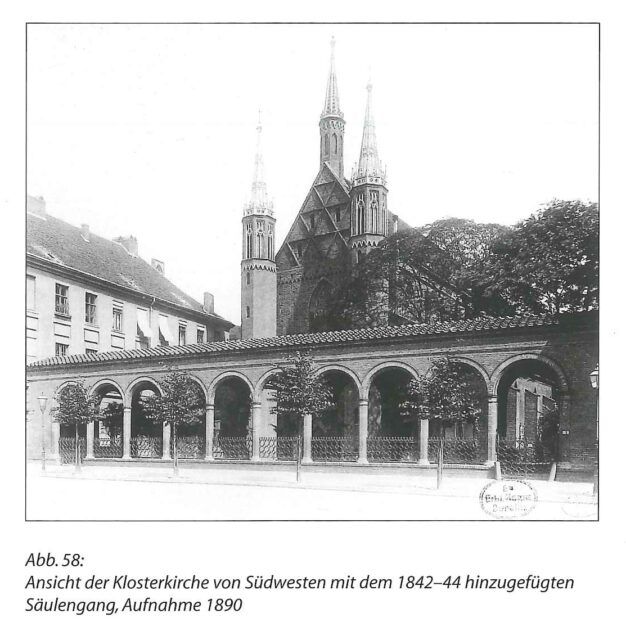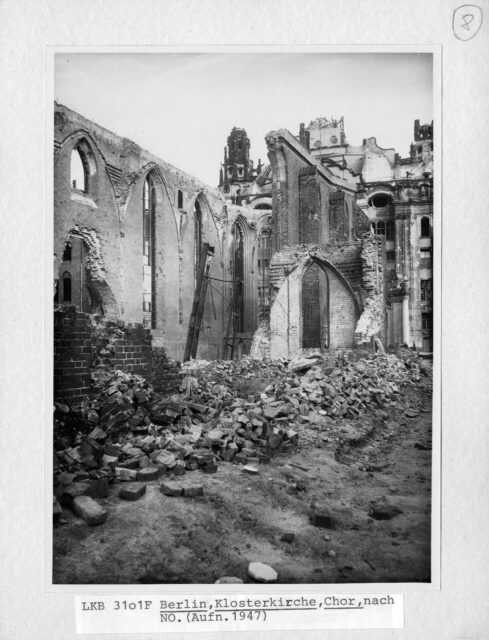750 years of history
Klosterruine Berlin from 1271 until today
Short film by documentary filmmaker Johanna Ickert – in cooperation with the Landesdenkmalamt Berlin and the Department of Art, Culture and History of the Bezirksamt Mitte of Berlin
History
The ruins of the Franciscan minster are thought to be the last remains of a medieval cloister culture in Berlin. As the very first building completely constructed using bricks, it marked the beginning of a regional development in Brick Gothic. The turbulent story of its construction and usage reflects Berlin’s eventful history, and at the beginning of the 21st century the political debates surrounding the historical city centre and the urban planning for Molkenmarkt have pushed the Klosterkirche back into the focus of public attention.
Late 13th century – Foundation of the Franciscan cloister site
The monks of the mendicant order of the Franciscans established the minster at the end of the 13th century, after the Brandenburger margrave presented them with the plot as a gift in 1271. Construction of the cloister site received additional support from the Knight Jacob von Nebede, who gave the order the brickworks in nearby Tempelhof in 1290.
1539 – Secularisation and use as a printer’s shop
Following the Reformation, Berlin/Cölln became Protestant in 1539 and the convent of the Berlin Franciscan order was disbanded. However, the monks received the life-long right to continue living in the cloister. The last Franciscan monk, Brother Peter, died in 1571. In the following years the cloister was home to Leonhard Thurneysser, alchemist and personal physician to the Elector. He set up the first printer’s shop in Berlin which was equipped to print documents in various languages. In addition, he founded Brandenburg’s first scientific laboratory, for which he laid out a botanical garden and kept exotic animals in the cloister’s courtyard.
1574 – The Berlin Gymnasium zum Grauen Kloster
The local lord, the Elector Johann Georg von Brandenburg, inaugurated Berlin’s first grammar school in 1574 on the cloister site, called the Gymnasium zum Grauen Kloster (the grammar school of the grey cloister): the school was granted use of the church, the refectory, the confessional room, a section of the garden including the cloister, and the churchyard. Famous students and teachers included, among others, Karl Friedrich Schinkel, Friedrich Ludwig Jahn and Otto von Bismarck.
19th century – Remodeling
At the beginning of the 19th century the building complex was in a bad state of repair. Karl Friedrich Schinkel and Christian Gottlieb Cantian were among those who presented plans for the necessary renovations. During the following decades extensive and comprehensive structural alterations and renovations were carried out. These included restructuring the north wing to accommodate an observatory and an assembly hall, and expanding the cloister complex to include a multi-storey residential hall for teachers and a gym on Littenstraße. In 1902 the church had to be closed down due to damage caused by damp; it was reopened in 1936, and was once again used as a house of worship.
1945 – Destruction of the cloister complex
In April 1945 the cloister site was badly damaged by bombing raids. All that remained of the original church building were the enclosing walls on the north, east and west sides; on the southern side the aisle and parts of the walls were destroyed. In 1947 13-year old Peter Rohrlach saved 6000 books from the school library, which was in total ruins.
From 1951 – New approaches to urban planning and cultural usage
During construction work on the subway during 1951, the north-west corner of the aisle and its external walls were removed, and as a result the top of the west gable collapsed. When Grunerstraße was widened 17 years later, further remains of the cloister complex were torn down. The surrounding area was redesigned as a public park area. In the 1980s restoration work was conducted in the ruins of the Franciscan minster in preparation for Berlin’s 750-year anniversary in 1987, and further restorations were carried out in 2002-2005.
Beginning in 1982, the historic monument was used for cultural events: East Berlin-based sculptors invited the public to attend self-organised sculpture exhibitions, and these events were continued from 1992 with the assistance of the supporters’ association Förderverein Klosterruine e.V. In 2016 the structural and cultural responsibility was transferred to the Department for Art, Culture and History in the District Office of Berlin- Mitte. Since then, artists are regularly invited to open new perspectives on and for the ruins of the Franciscan minster.
Photos courtesy of Landesdenkmalamt Berlin

